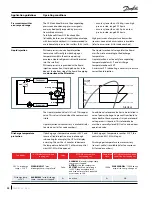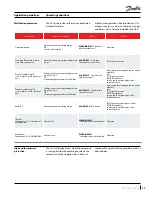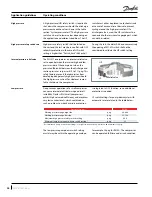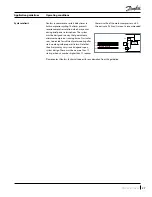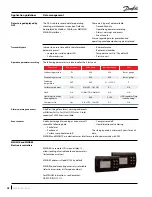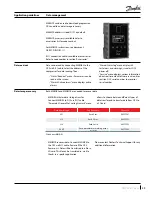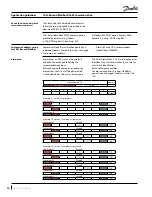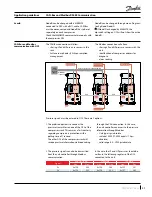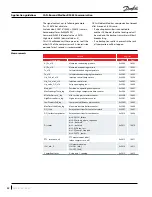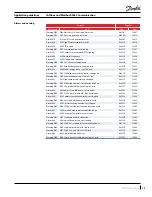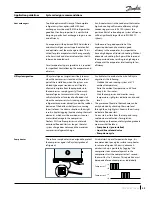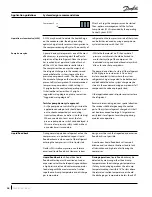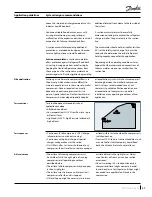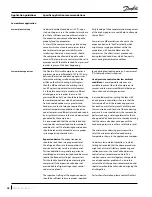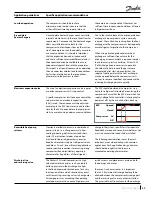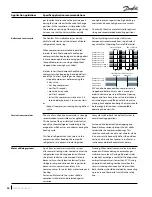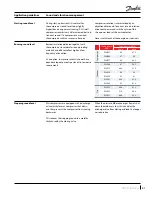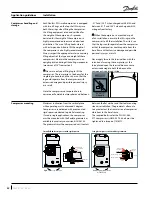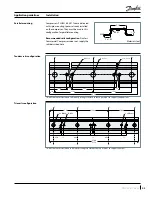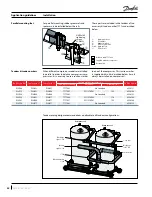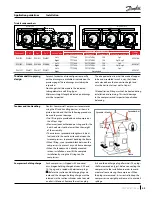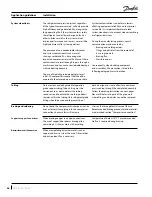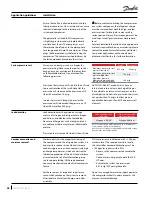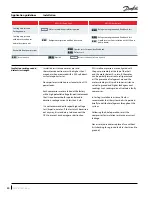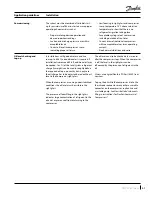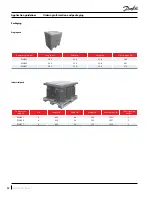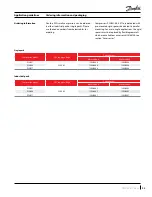
Application guidelines
38
FRCC.PC.021.A5.22
Specific application recommendations
The Danfoss PSH scroll compressor requires a
minimum pressure differential of 87 to 102 psig
between the suction and discharge pressures
to force the orbiting scroll down against the
oil film on the thrust bearing. Anything less
than this differential and the orbiting scroll
can lift up, causing a metal-to-metal contact.
It is therefore necessary to maintain sufficient
discharge pressure in order to ensure this
pressure differential. Care should be taken during
low ambient operations when heat removal
from air-cooled condensers is greatest and
head pressure control may be required for low
ambient temperature applications. Operation
under low pressure differential may be observed
by a significant increase in the sound power level
generated by the compressor.
It is recommended that the unit be tested and
monitored at minimum load and low ambient
conditions as well. The following considerations
should be taken into account to ensure proper
system operating characteristics.
Expansion device
: The expansion device
should be sized to ensure proper control of
the refrigerant flow into the evaporator. An
oversized valve may result in erratic control.
This consideration is especially important in
manifolded units where low load conditions may
require the frequent cycling of compressors.
This can lead to liquid refrigerant entering the
compressor if the expansion valve does not
provide stable refrigerant super-heat control
under varying loads.
The superheat setting of the expansion device
should be sufficient to ensure proper superheat
levels during low loading periods. A minimum of
9°F stable superheat is required.
Head pressure control under low ambient
conditions:
Several possible solutions are
available to prevent the risk of compressor to
vacuum and low pressure differential between
the suction and discharge pressures.
In air-cooled machines, cycling the fans with
a head pressure controller will ensure that the
fans remain off until the condensing pressure
has reached a satisfactory level. Variable speed
fans can also be used to control the condensing
pressure. In water-cooled units, the same can be
performed using a water regulator valve that is
also operated by head pressure, thereby ensuring
that the water valve does not open until the
condensing pressure reaches a satisfactory level.
The minimum condensing pressure must be
set at the minimum saturated condensing
temperature shown in the application envelopes.
Under very low ambient conditions, in which
testing has revealed that the above procedures
might not ensure satisfactory condensing and
suction pressures, the use of a head pressure
control valve is recommended. Note: This
solution requires extra refrigerant charge, which
can introduce other problems. A non-return
valve in the discharge line is recommended and
special care should be taken when designing the
discharge line.
For further information, please contact Danfoss.
Low ambient start-up
Low ambient application
Under cold ambient conditions (<32°F), upon
start-up the pressure in the condenser may be so
low that a sufficient pressure differential across
the expansion device cannot be developed to
properly feed the evaporator.
As a result, the compressor may go into a deep
vacuum, which can lead to compressor failure
due to internal arcing and instability in the
scroll wraps. Under no circumstances should
the compressor be allowed to operate under
vacuum. The low-pressure control must be set in
accordance with the table section “Low pressure”
in order to prevent this from happening.
Early feeding of the evaporator and management
of the discharge pressure could help to attenuate
these effects.
Low pressure differentials can also cause the
expansion device to “hunt” erratically, which
might cause surging conditions within the
evaporator, with liquid spillover into the
compressor. This effect is most pronounced
during low load conditions, which frequently
occur during low ambient conditions.
Low ambient operations

